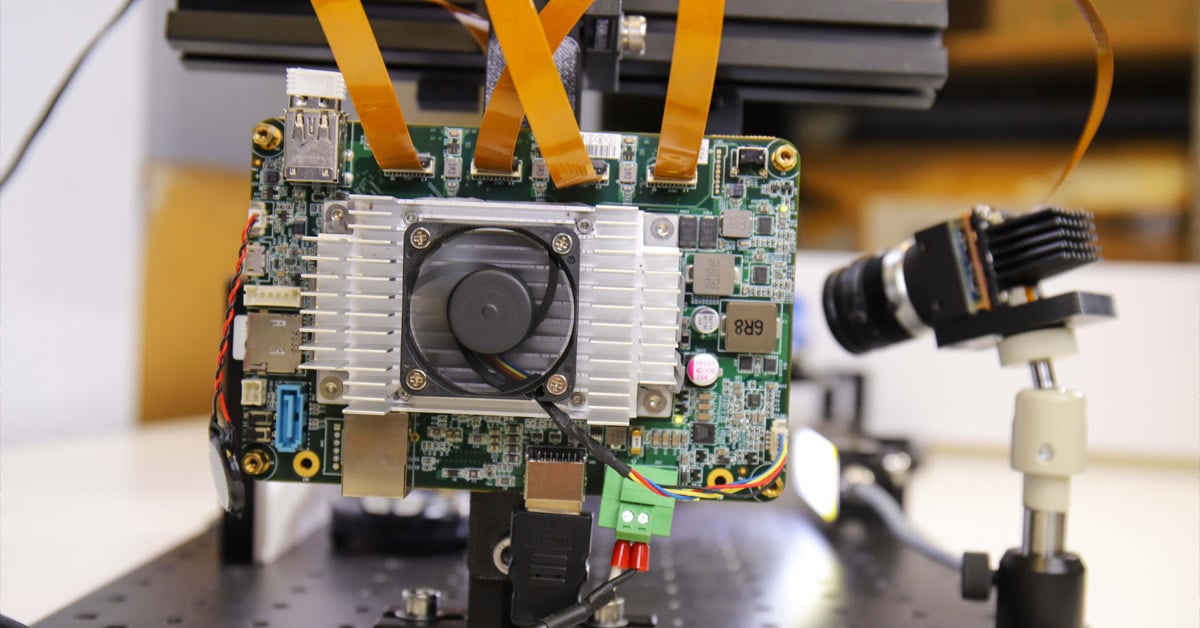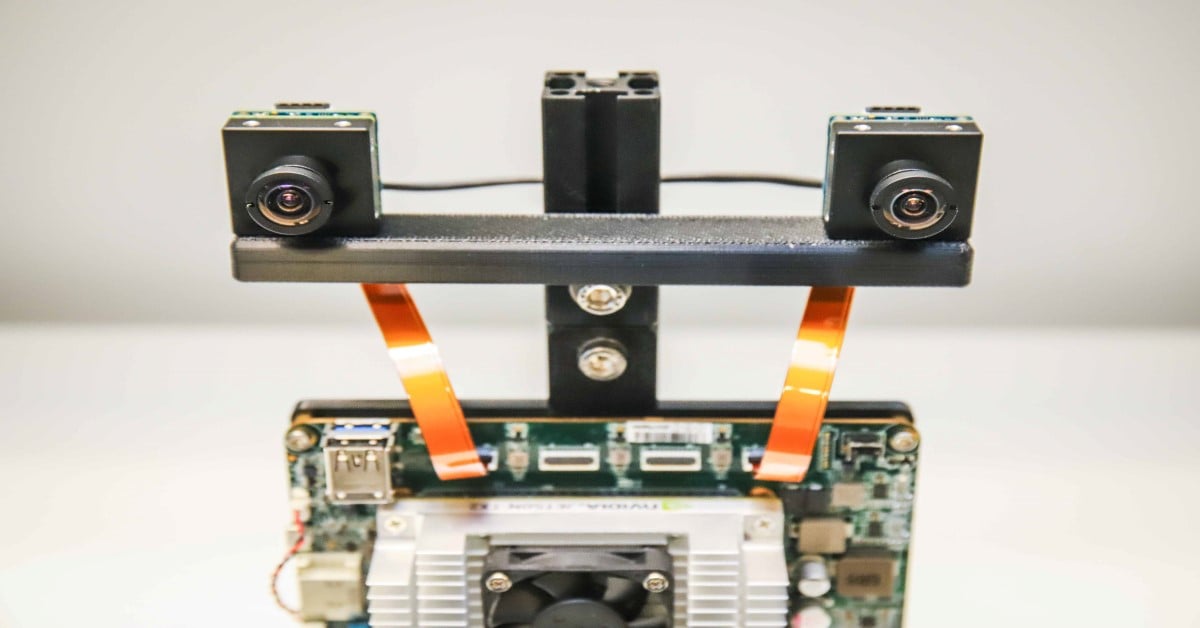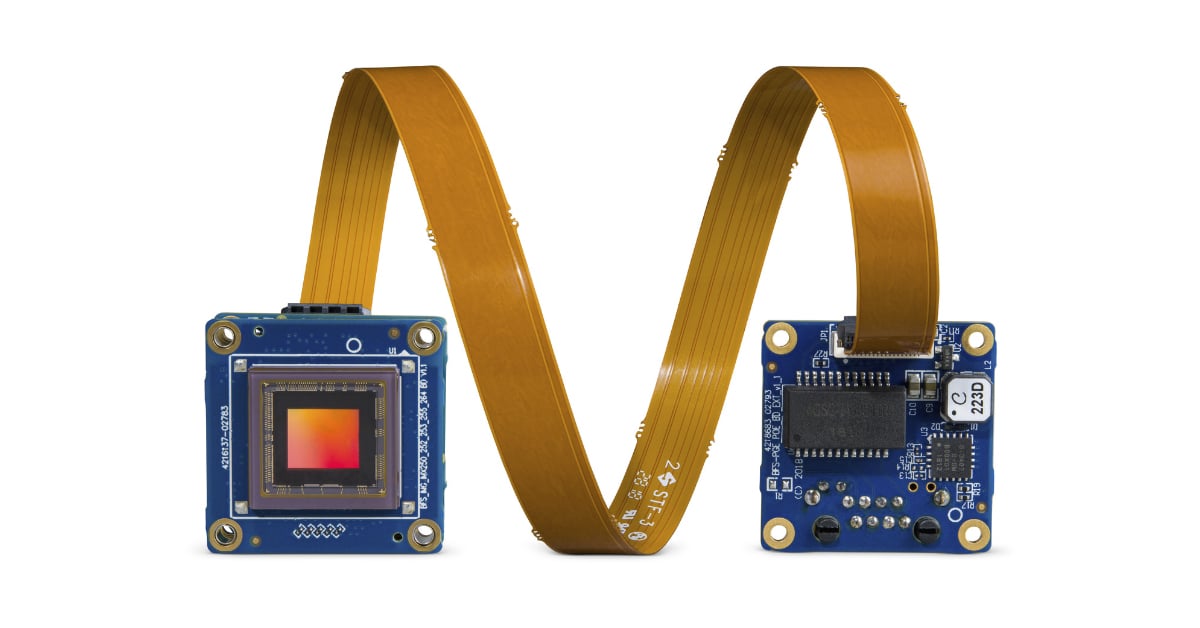Capturing Consistent Color
CHALLENGE: Whether you're sorting fruits and vegetables or inspecting sneakers, capturing accurate color and rich details at high speed with guaranteed reliability calls for certain characteristics in a camera.
Solution:
The Blackfly S and Oryx combine the latest CMOS sensors with advanced color algorithms and includes:
• A color correction matrix for accurate color reproduction under any lighting conditions
• Excellent sensitivity and dynamic range to maximize image contrast
• Precise triggering to guarantee image capture at high speed
ACCURATE COLOR REPRODUCTION
Obtaining true color by correcting for sensor response and light source
The Blackfly S and Oryx allow users to capture color as accurately as possible. To achieve the most accurate color, each Blackfly S and Oryx model employs an internal color correction matrix (CCM) that adjusts the color sensor’s unique spectral response to more closely match the color space of the sRGB color profile standard. Depending on your application's requirements, the camera’s CCM can be enabled through our Color Transformation setting. When it is enabled, colors will more consistently and accurately match their appearance in nature.
While the CCM helps create colors that are truer to life, white balance corrects for the color given off by different light sources. This is known as the light’s color temperature, expressed in kelvins (K). For example, incandescent light has a lot of red in its wavelength composition, causing a camera’s white balance to scale up blue and green to balance the image to a neutral color. The Spinnaker SDK has preset white balance values for Tungsten (2800K), Warm Fluorescent 3000K, Cool Fluorescent 4000K, Daylight (5000K), Cloudy (6500K) and Shade (8000K). It also accepts custom values, to match your light source perfectly.
For more technical information please visit our Blackfly S and Oryx color transformation / white balance page.

Proper color correction takes into account both the sensor's sensitivity to red, green, and blue wavelengths (left) as well
as the specific color temperatures of different light sources (right).

Images above use tungsten (incandescent) lighting.
HIGH-PERFORMANCE CAMERA IMAGE QUALITY
Excellent quantum efficiency for improved low light performance
As mentioned above, a sensor's spectral response, or its quantum efficiency (QE), is one way to measure a sensor’s ability to turn light into an electrical signal. For color, quantum efficiency is measured for each red, green, and blue channel. A higher QE means greater light detection sensitivity, which is beneficial to most applications, especially those that are low-light. In addition, certain sensors may be geared toward better sensitivity at different wavelength ranges. While no sensor can reach 100%, FLIR offers mono sensors with a class-leading peak QE of 70%-80%. Color sensor QE tends to be lower than mono sensor QE because the color filter that sits on top of its photodiode absorbs some of the incoming photons. The images below show our EMVA 1288 QE curves for the BFS-U3-13Y3C and BFS-U3-51S5C.
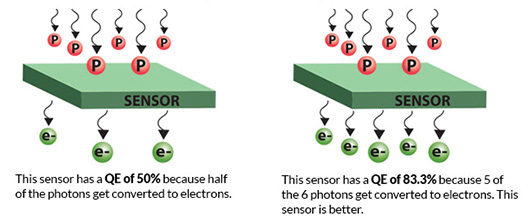

High dynamic range to maximize image contrast
Dynamic range describes the camera's ability to detect maximum and minimum light intensities (shadows and highlights). High dynamic range allows the camera to capture more levels of grayscale detail in images. For example, in food sorting applications where round and cylindrical fruit and vegetables create more shadows and highlights than flat objects, color camera models with high dynamic range allow the vision system to see more detail.
BFS-U3-32S4C-C Dynamic Rage is 70.02dB
BFS-U3-51S5C-C Dymainc Range is 70.74 dB
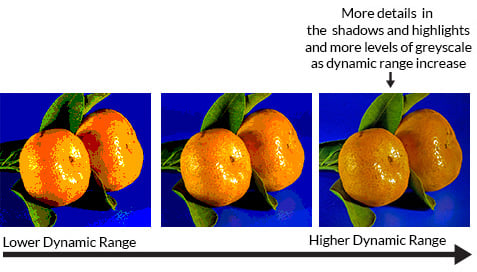
HIGH SPEED PRECISE TRIGGERING
Accurate and precise triggering is expected for all machine vision cameras. However, as applications become more complex, so do triggering requirements and patterns. What sets FLIR cameras apart is the degree of flexibility in the type of triggering that a user can set.
The Blackfly S and Oryx provide a unique feature called Logic Blocks that allows you to create custom trigger configurations, detect missing triggers, and re-fire to ensure every image is captured.
Here are some examples of custom trigger configurations:
- Trigger the camera when it receives an external trigger pulse + some other user defined condition (E.g. amount of time).
- Trigger when the camera is ready to trigger, a trigger pulse has been received, and exposure has not yet started. This configuration allows you to "remember" trigger pulses that occurred when the camera was not in a position to trigger (E.g. it was already exposing).
- Find out more about Logic Blocks from our application note.
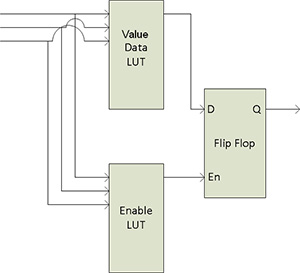
Each Blackfly S and Oryx camera has two logic blocks available. Each logic block is comprised of two lookup tables (LUT) with configurable inputs, two truth tables and a flip flop output.
